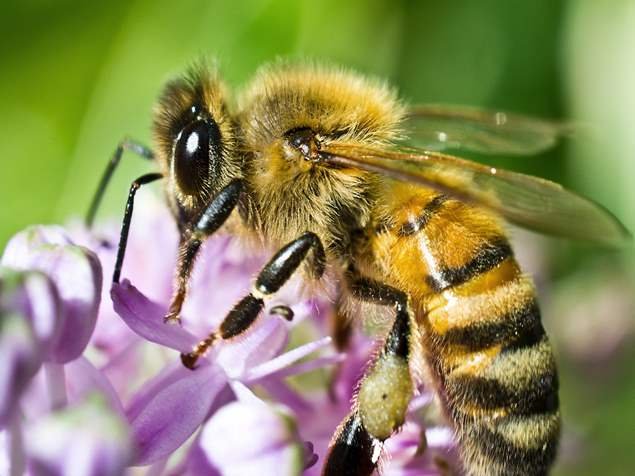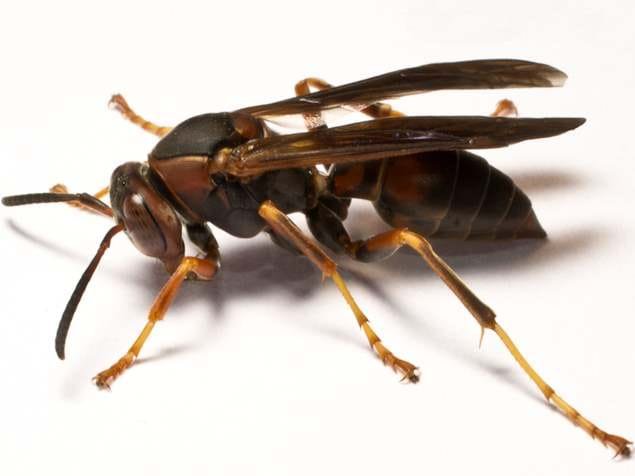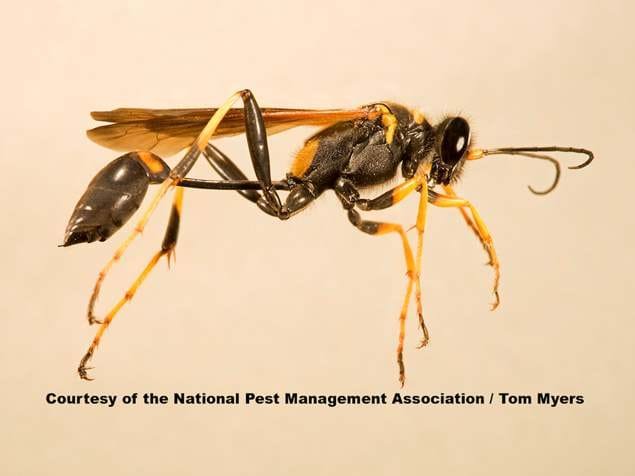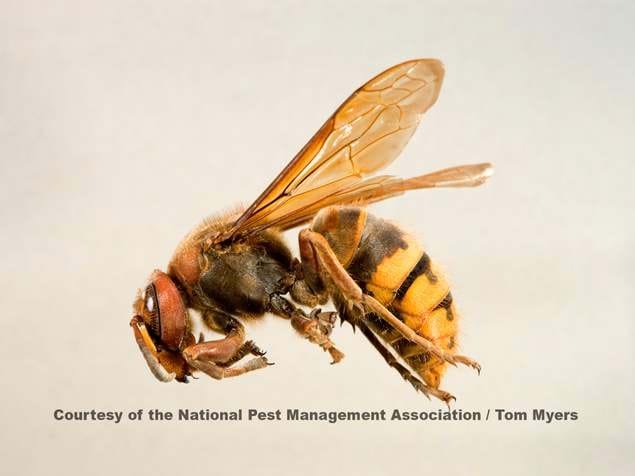Stinging Insects
Bees can be found anywhere in North America, where flowers bloom. From forests to farms, from cities to wildlands, there are 4,000 native bee species in the United States, from tiny to large carpenter bees. Bees come in a wide array of sizes, shapes, and colors. They are also varied in their behavior, the places they frequent, the type nests they build, the flowers they visit, and their times of activity. Both bees and wasps have species that are solitary or social (living together and sharing the rearing and provisioning). For example, both bumble bees and yellow jacket wasps are social and have an annual colony, where a queen builds a nest, collects food, and lays eggs.
There are many species of North American bumble bees. Many people are familiar with bumble bees. They are large, furry, and mostly black with stripes of yellow, white, or even bright orange.
Carpenter Bees
Carpenter bees are typically large and black. It is often challenging to them apart from bumble bees except for one very distinctive feature: bumble bees are fuzzy all over, while the upper abdomen of carpenter bees is smooth and almost hairless. Male Carpenter bees do not have a stinger.
Honey bees
Honey bees get their common name from the honey they produce using the nectar of flowers. They are highly social insects found all over the world and are extremely beneficial because of their role in pollination. Honey bees are usually orange to brown in color to sometimes black, and have an enlarged rear portion of the abdomen that is broadly banded with orange and brown, or brown and black and includes a visible stinger. Their bodies are mostly covered with pale hair.
Paper wasps
Paper wasps live throughout the US and can be identified by their 0.5-1.5 inch long reddish brown or black body, and the yellow rings around their abdomens. Paper wasps are often mistaken for bees, but they lack bees’ characteristically fuzzy bodies. These wasps their name from the way that they create paper from chewing wood and vegetation that they then use to make their nests. Cited as resembling an upside-down umbrella held up by a single stalk. Paper wasps can sting people when their nest is approached or threatened.
Yellow Jackets
Eastern yellow jackets are a ground-nesting species of wasp that are commonly found throughout the eastern US. Yellow jackets are common and are found in all manner of woodlands, lawns, and can even make their nests inside homes. Eastern yellow jackets are identified by their striking black and yellow markings, with a mostly yellow face. Yellow jackets can often become very aggressive if their nest is disturbed, and will attempt to deliver painful stings as a result.
Mud Daubers
Mud daubers are long, skinny mostly black wasps about 1 inch long. The name refers to the nests they construct, which is built of mud molded into place by the wasps. Mud daubers are not usually aggressive, but can become angry when disturbed. Stings are not common.
Bald Faced Hornet
The bald-faced hornet has a black and mostly hairless body with white patches on its head and thorax and three white stripes around the end of its abdomen. The bald-faced hornet lives in a nest constructed of woody materials that have been chewed and mixed with the wasp’s saliva to form a gray, paper-like material. They form initially as a small structure but grow throughout the summer as the colony gets larger and larger. A nest left alone until the end of the summer may be an ovoid globe that is two feet high and a foot and a half across.
Cicada Killer Wasps
Cicada Killer Wasps are solitary wasps that appear during the summer months. The female Cicada Killer Wasp is equipped to sting and eject venom into cicadas in order to feed them to their larvae. They will only sting people if caught in clothing or are caught by your bare hands. They are content with simply digging their holes and hunt for cicadas. The male Cicada Killers are smaller and will generally only defend their territory from other intruding males. A Cicada Killer will be up to 1.5 inches long, and the males are a little smaller than the females. They have a black abdomen with yellow markings and an orange tint to the wings. Cicada Killer Wasps are often confused for hornets or European wasps.
Digger Wasps
The common name Digger Wasp may refer to any member of a number of thread-waisted wasp families. In some instances, digger wasps will settle for space in and among mulch or pine straw, although they would prefer to dig a tunnel in the dirt or between the cover of grass or other plants. Digger wasps resemble social wasps in appearance with their yellow and black patterns although they can be distinguished from social wasps as the wings are not folded lengthwise when at rest.






